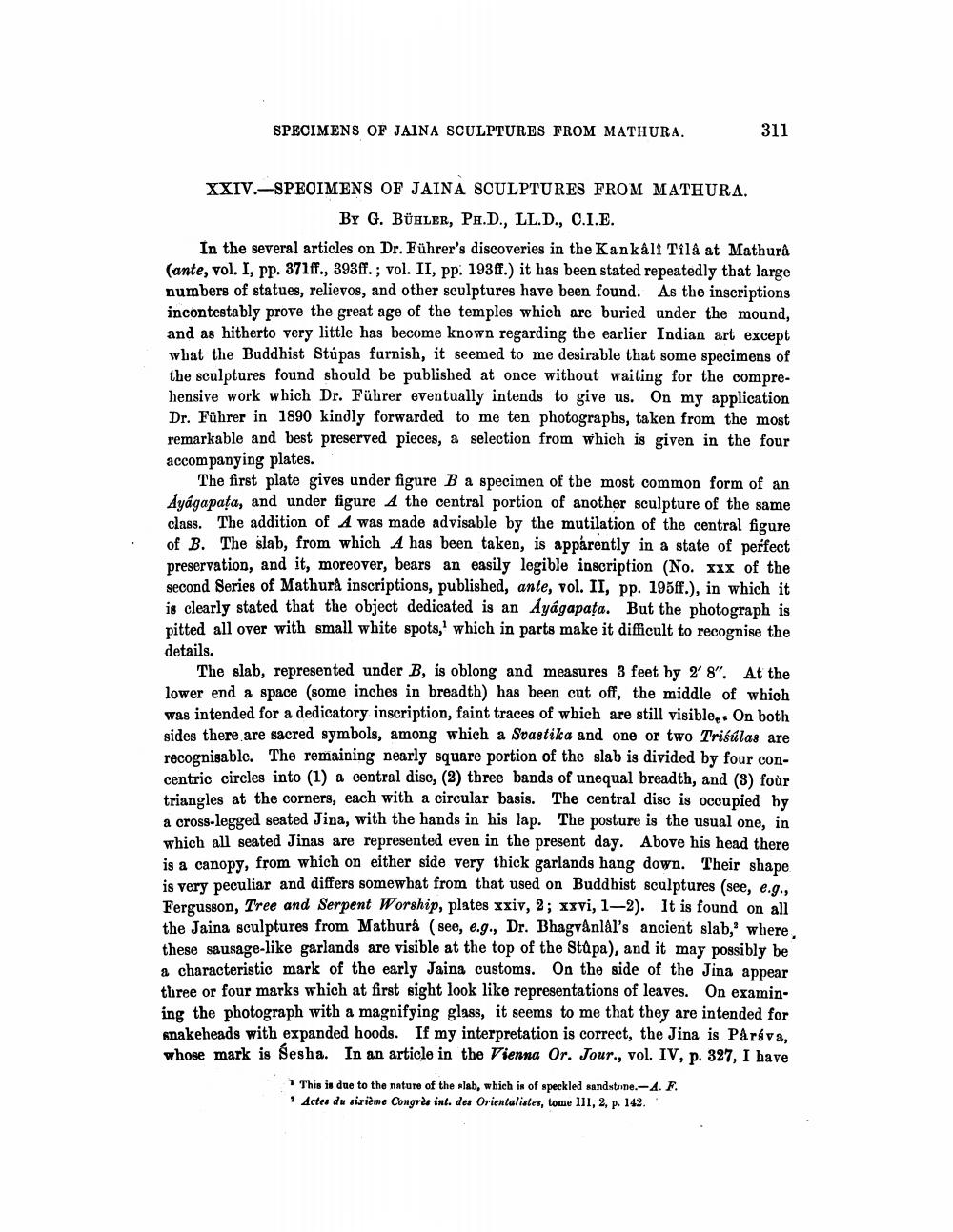________________
SPECIMENS OF JAINA SCULPTURES FROM MATHURA.
311
XXIV.-SPECIMENS OF JAINA SCULPTURES FROM MATHURA.
By G. BÜHLER, PA.D., LL.D., C.I.E. In the several articles on Dr. Führer's discoveries in the Kankali Tila at Mathura (ante, vol. I, pp. 371ff., 393ff. ; vol. II, pp. 193ff.) it has been stated repeatedly that large numbers of statues, relievos, and other sculptures have been found. As the inscriptions incontestably prove the great age of the temples which are buried under the mound, and as hitherto very little has become known regarding the earlier Indian art except what the Buddhist Stů pas furnish, it seemed to me desirable that some specimens of the sculptures found should be published at once without waiting for the comprehensive work which Dr. Führer eventually intends to give us. On my application Dr. Führer in 1890 kindly forwarded to me ten photographs, taken from the most remarkable and best preserved pieces, a selection from which is given in the four accompanying plates.
The first plate gives under figure B a specimen of the most common form of an Ayagapata, and under figure A the central portion of another sculpture of the same class. The addition of A was made advisable by the mutilation of the central figure of B. The slab, from which A has been taken, is apparently in a state of perfect preservation, and it, moreover, bears an easily legible inscription (No. xxx of the second Series of Mathura inscriptions, published, ante, vol. II, pp. 195ff.), in which it is clearly stated that the object dedicated is an Ayágapața. But the photograph is pitted all over with small white spots, which in parts make it difficult to recognise the details.
The slab, represented under B, is oblong and measures 3 feet by 2 8". At the lower end a space (some inches in breadth) has been cut off, the middle of which was intended for a dedicatory inscription, faint traces of which are still visible - On both sides there are sacred symbols, among which a Svastika and one or two Trisúlas are recognisable. The remaining nearly square portion of the slab is divided by four concentric circles into (1) a central disc, (2) three bands of unequal breadth, and (3) four triangles at the corners, each with a circular basis. The central disc is occupied by
crosg.legged seated Jina, with the hands in his lap. The posture is the usual one, in which all seated Jinas are represented even in the present day. Above his head there is a canopy, from which on either side very thick garlands hang down. Their shape is very peculiar and differs somewhat from that used on Buddhist sculptures (see, e.g., Fergusson, Tree and Serpent Worship, plates xxiv, 2; xxvi, 1-2). It is found on all the Jaina sculptures from Mathurå (see, e.g., Dr. Bhagvanlal's ancient slab, where these sausage-like garlands are visible at the top of the Stapa), and it may possibly be a characteristic mark of the early Jaina customs. On the side of the Jina appear three or four marks which at first sight look like representations of leaves. On examining the photograph with a magnifying glass, it seems to me that they are intended for snakeheads with expanded hoods. If my interpretation is correct, the Jina is Paráva, whose mark is Sesha. In an article in the Vienna Or. Jour., vol. IV, p. 327, I have
1 This is due to the nature of the slab, which is of speckled sandstone.-4. F. • Actes du rivième Congrès int. des Orientalistes, tome 111, 2. p. 142.




